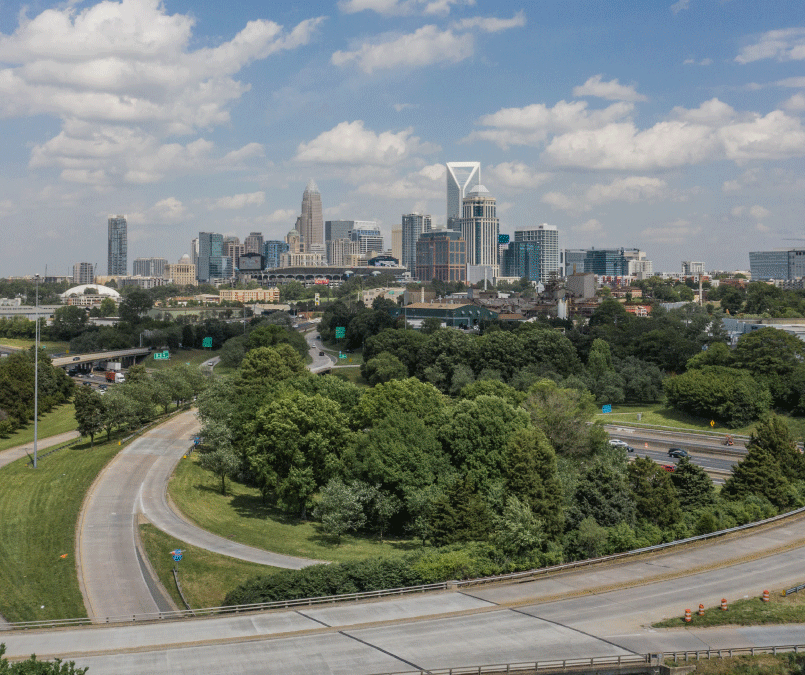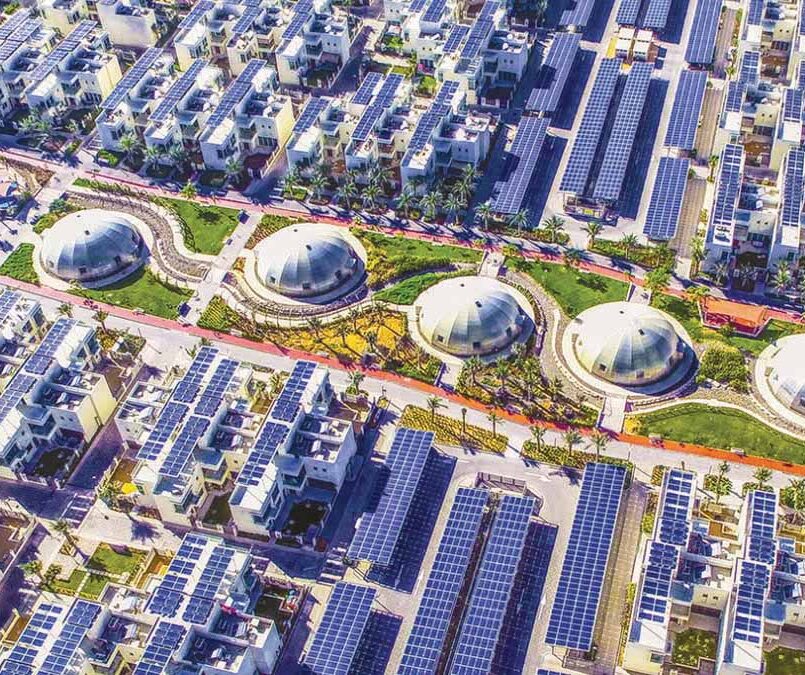From Vision to Reality: The Rise of Eco-Friendly Cities Worldwide
As the world’s population grows and urbanization accelerates, cities face the urgent task of finding sustainable ways to house, transport, and provide for millions while preserving our planet’s resources. Eco-friendly cities have moved from a forward-thinking vision to an emerging reality, as communities around the globe work to transform urban spaces into sustainable, livable environments. From clean energy innovations and green building designs to sustainable waste management and accessible green spaces, eco-friendly cities are paving the way for an urban future that prioritizes both people and the planet.
What is an Eco-Friendly City?
An eco-friendly city, often known as an eco city, is an urban area designed to minimize environmental impact while enhancing the well-being of its residents. These cities incorporate a range of green practices: from renewable energy systems and sustainable transportation options to green infrastructure, water conservation, and waste reduction. By adopting policies and technologies that reduce their ecological footprint, eco-friendly cities aim to provide a high quality of life in balance with the planet’s natural resources.
Key Features of Eco-Friendly Cities
The core principles of eco-friendly cities emphasize environmental health, social inclusivity, and economic resilience. Here are some defining characteristics of these cities and how they work to achieve sustainable urban living:
- Clean and Renewable Energy Sources
Eco-friendly cities rely heavily on renewable energy sources like solar, wind, and geothermal power to meet their energy demands and reduce reliance on fossil fuels. These cities are designed with energy efficiency in mind, implementing energy-saving technologies across buildings and infrastructure. For example, Freiburg, Germany, is known as a “solar city” for its extensive use of solar panels on homes, public buildings, and businesses. The result is a significant reduction in carbon emissions and a cleaner urban environment. - Efficient Public Transportation Systems
To cut down on emissions from cars and reduce traffic congestion, eco-friendly cities prioritize efficient public transportation options. This includes everything from electric buses and trams to bike-sharing programs and extensive pedestrian networks. Curitiba, Brazil, is an example of a city that has redefined urban transportation, using its Bus Rapid Transit (BRT) system to provide affordable, low-emission transit that minimizes environmental impact. - Green Building Design and Architecture
Buildings are a major source of energy use and emissions, but eco cities focus on green architecture to mitigate these effects. Eco-friendly buildings are designed with energy-efficient materials, natural ventilation, solar power, and optimized natural lighting. Singapore, for instance, integrates vertical gardens and green rooftops into its skyscrapers, which help to regulate indoor temperatures, improve air quality, and enhance biodiversity in the urban landscape. - Water Conservation and Management
Sustainable water management is critical to eco cities, which often face water scarcity due to climate change and urbanization. Green cities use techniques such as rainwater harvesting, wastewater treatment, and stormwater management to conserve water. These cities incorporate permeable pavements, rain gardens, and green roofs to capture and reuse rainwater, which reduces strain on water resources and mitigates flooding risks. - Waste Reduction and Circular Economy
Eco-friendly cities aim to drastically reduce waste through recycling, composting, and waste-to-energy technologies. They adopt the principles of a circular economy, where resources are reused and repurposed rather than discarded. For instance, San Francisco has set ambitious zero-waste goals, diverting waste from landfills through extensive recycling and composting programs. These practices reduce pollution, conserve resources, and help cities manage waste sustainably. - Green Spaces and Urban Biodiversity
To promote a healthy urban ecosystem, eco cities prioritize the creation of green spaces and biodiversity corridors. Parks, urban forests, and community gardens improve air quality, regulate temperature, and support local wildlife. Singapore, often referred to as the “City in a Garden,” has successfully integrated green spaces throughout its dense urban core, creating a harmonious blend of city and nature that benefits both residents and biodiversity.
Examples of Eco-Friendly Cities Worldwide
Eco-friendly cities around the world are leading the charge toward sustainable urban living. Here are a few cities that have made significant strides in environmental innovation and sustainable practices:
- Copenhagen, Denmark: Committed to becoming the world’s first carbon-neutral capital by 2025, Copenhagen has invested heavily in renewable energy, bike infrastructure, and sustainable buildings. The city’s cycling-friendly streets and efficient public transportation have set a global standard for green mobility.
- Stockholm, Sweden: Recognized as one of Europe’s greenest cities, Stockholm aims to be fossil-fuel-free by 2040. The city’s extensive recycling programs, green building standards, and focus on energy efficiency are making strides toward sustainability.
- Masdar City, UAE: Masdar City was designed from the ground up to be a model of sustainable urban planning in the harsh desert climate. Powered by renewable energy and featuring a pedestrian-friendly layout, Masdar City is a pioneering example of how cities in extreme climates can be environmentally friendly.
- Vancouver, Canada: Vancouver is committed to being the greenest city in the world by 2025. Its Greenest City Action Plan focuses on reducing greenhouse gas emissions, expanding green spaces, and promoting clean energy.
Benefits of Eco-Friendly Cities
Eco-friendly cities offer numerous benefits, extending well beyond environmental sustainability. Here’s how they positively impact residents and the world:
- Reduced Carbon Footprint: By relying on renewable energy, reducing waste, and implementing green transportation, eco cities significantly lower greenhouse gas emissions.
- Improved Public Health: Cleaner air, less pollution, and access to green spaces contribute to better public health outcomes, reducing rates of respiratory diseases and mental health issues.
- Economic Opportunities: Eco-friendly cities drive economic growth through green job creation in sectors like renewable energy, sustainable construction, and waste management. Innovation in these areas attracts investment and talent.
- Resilience to Climate Change: By focusing on sustainable water management, green infrastructure, and renewable energy, eco cities are better equipped to handle the effects of climate change, such as extreme weather events.
- Enhanced Quality of Life: Eco-friendly cities offer residents a higher quality of life with reduced pollution, more green spaces, and convenient, sustainable transportation options. They foster a strong sense of community and inclusivity, making urban life more fulfilling and enjoyable.
Challenges in Creating Eco-Friendly Cities
Despite the benefits, transforming cities into eco-friendly environments is not without challenges. Some of the main obstacles include:
- High Upfront Costs: Building green infrastructure and retrofitting buildings for energy efficiency can require significant upfront investment, which may deter some cities with limited budgets.
- Political and Social Resistance: Changing existing infrastructure and policies can face resistance from stakeholders who are accustomed to traditional urban planning models.
- Balancing Growth with Sustainability: Rapidly growing cities face the challenge of balancing sustainable practices with the needs of a growing population, which can increase demand for housing, water, and transportation.
- Behavioral Change: Eco cities rely on residents adopting sustainable habits, such as using public transit instead of cars or embracing recycling. Encouraging these behavioral changes requires education, incentives, and a cultural shift.
The Road Ahead for Eco-Friendly Cities
As more cities adopt eco-friendly practices, the future of urban living is poised to be more sustainable and resilient. Technology will play a crucial role, with smart systems allowing for efficient energy management, waste reduction, and water conservation. International collaborations, policy shifts, and community involvement will also be vital to expand the eco-friendly city model worldwide.
Conclusion
Eco-friendly cities represent a transformative approach to urban living, one that combines environmental responsibility with enhanced quality of life for residents. From Copenhagen to Masdar City, these urban centers are redefining what it means to be a city in the modern age. As eco-friendly cities continue to grow in number and influence, they offer a blueprint for a sustainable future, showing how cities can be vibrant, resilient, and in harmony with the planet.





